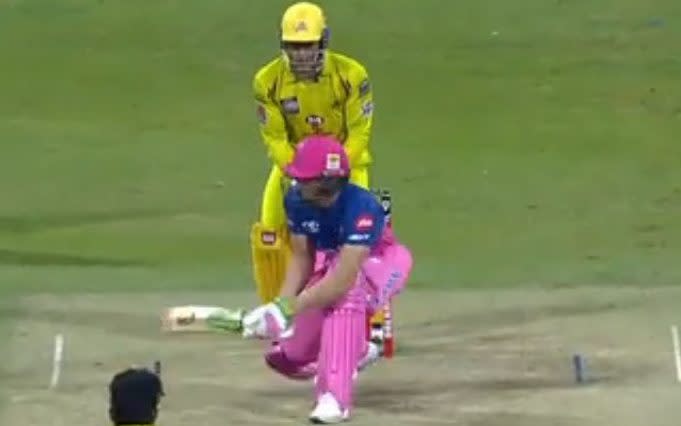Opener or finisher? IPL performances can help England decide on Jos Buttler's best position

In May 2018, Jos Buttler played an IPL match for Rajasthan Royals in Delhi. Then, it rained. And so, requiring 151 from 12 overs of their rain-reduced chase, Rajasthan promoted Buttler from his normal middle-order berth to open. He promptly smote 67 from 26 balls.
A plan forged in desperation allowed Buttler to become one of the best T20 batsmen in the world. He unfurled a record-equalling run of five consecutive fifties in the IPL, and has opened in every England T20 game he’s played since. Since being elevated by Rajasthan, Buttler averages 43 as a T20 opener, the fifth best in the world - and he scores quicker than all those above him.

Last week, the failings of their middle-order, and Buttler’s relatively modest IPL season, prompted Rajasthan to change tack. They moved Buttler to No 5, entrusting him to finish off innings with the same elan as his idol AB de Villiers. This time, it took Buttler until his second innings in the role to make a spectacular impact. His 48-ball 70* against Chennai, on a pitch in which everyone else scored a combined 169-8 off 177 deliveries, did not merely win Rajasthan the game. It also reopened a simmering debate: where should Buttler bat?
After all, the last time Buttler’s IPL position changed it heralded a shift in how England used him in T20 cricket.
Cricket is an age of specialisation, when bridging the formats is harder than ever; after a stellar Test summer, Buttler has rare status as an undisputed first-choice player in all formats. Yet specialisation is increasingly detectable not just between formats but within them — above all in T20.
Buttler, unusually, is simultaneously one of the best T20 openers in the world and explosive at the death. The question is how best to use him.

Paradoxically, the answer might depend less on Buttler himself but in the players around him. Given that he is so accomplished either opening or finishing innings off, the way that Buttler can most enhance a side depends upon the alternatives.
The Royals’s new stance on Buttler, essentially, is that for all his qualities as an opener, his skills finishing an innings are harder to find. For Rajasthan, Robin Uthappa and Sanju Samson can come closer to replicating Buttler’s top-order than anyone can match his control of the middle overs and death.
“Jos is obviously an unbelievable player at the top, but I also believe he's got the capabilities to do the things that AB de Villiers, Pollards and Hardik Pandyas….guys like that can do at the back end,” gushed Steve Smith, the Rajasthan skipper, after Buttler’s 70*. “Those kinds of players at the back end win you games, so it's a difficult one.”
The Buttler debate is a microcosm of a broader issue in T20. In England and the world over, the market for fine top-three batsmen is saturated. Opening is simply the best time to bat in T20, and leading players in T20 leagues — especially in the T20 Blast, where talent is diluted across 18 sides — gravitate towards the top, meaning that they often find themselves batting out of position, in the middle order, for their countries.

The upshot is that, if England decided that Buttler should be used in the middle order, they could still field Jonny Bairstow and two of Jason Roy, Tom Banton, Dawid Malan, Ben Stokes - who is now opening for Rajasthan - or Joe Root in their top three. The middle-order alternatives to Buttler are far less attractive.
Opening gives Buttler the chance to face the most balls and continue his brilliant international run. He averages 43, at a strike rate of 159, since being promoted to open by England, culminating in his 77* to seal the T20 series against Australia last month.
Shuffling Buttler down comes at this cost. But England would still not lack top order belligerence and they would have added explosiveness in the second half of the innings. The upshot might be a better-balanced batting line-up, and one better-equipped to reach formidable totals even if they lose early wickets.
So the debate about Buttler boils down to a simple question. Should he face the most balls possible, or be used where batting is hardest and the replacements are weaker? Buttler's rarefied level is such that he makes both answers so attractive.

 Yahoo News
Yahoo News 
